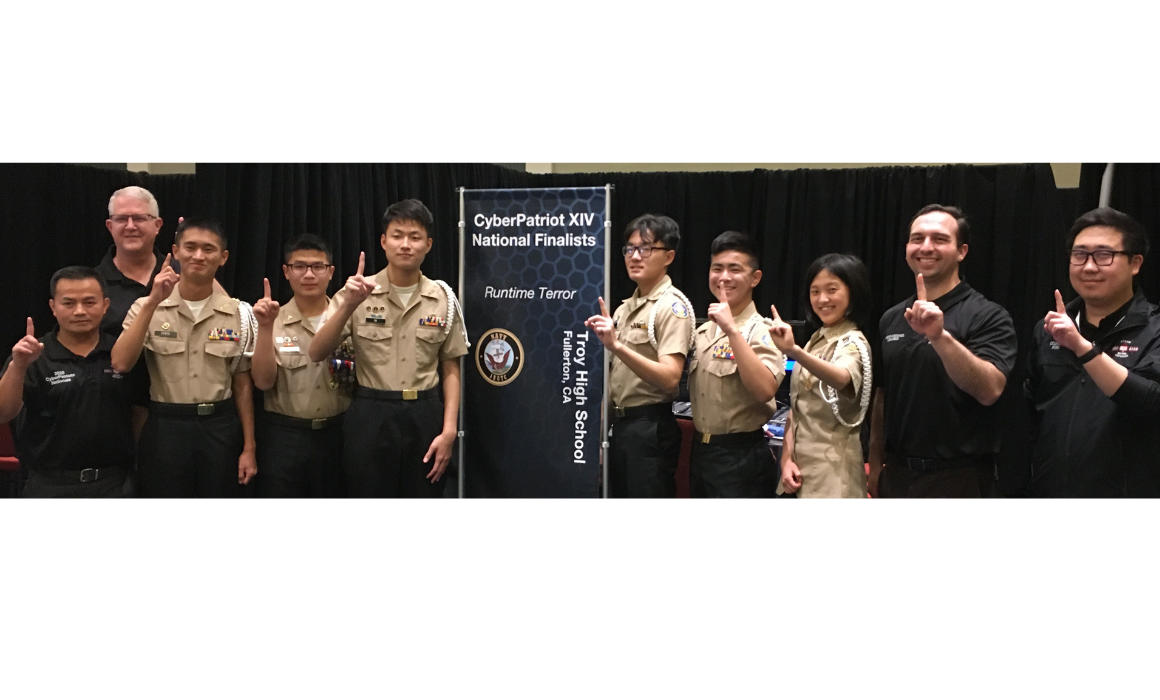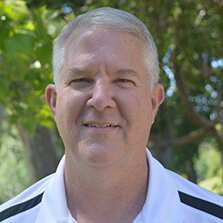
I T ’S YOUR F I R S T DAY on the job. You and your team have six hours to protect and defend your company’s computers and networks from hackers, viruses and unsafe practices.
And you’re 12 years old.
Such scenarios are common in cybersecurity competitions. And while many of high school teacher Robert “Allen” Stubblefield’s participating students are teens, growing numbers of middle schoolers are joining his teams in competitions these days. Since Stubblefield started teaching the subject in 2010, he has led 21 teams from Troy High School in Fullerton to the CyberPatriot nationals, capturing first place 3 times.
It’s not all about the awards. His monthlong summer camps have drawn 500 students for the past three seasons and now extend to fourth and fifth graders. “No one in the world is teaching 10- and 11-year-olds,” he says proudly. He’d like to see even younger students exposed to the basics of cybersecurity — a burgeoning field in our increasingly digital world. A handful of his students have been hired into well-paying jobs directly out of high school.
In mid-October, the U.S. Department of Education announced that Stubblefield was one of two recipients of the 2022 Presidential Cybersecurity Education Award. He and a teacher from Ohio were selected “for instilling in their students the skills, knowledge and passion for cybersecurity.”
The award, now in its third year, recognizes outstanding educators and leaders and creates awareness for cybersecurity occupations (there are currently more than 700,000 job openings in the U.S.). Stubblefield will be honored in December at the 2022 NICE K12 Cybersecurity Education Conference in St. Louis.

Alan Stubblefield
At Troy, a science and tech magnet school, Stubblefield teaches Cyber Defense. He served in the U.S. Navy for 21 years before becoming an educator — first as a Junior ROTC instructor for 10 years and then teaching computer science, his college major, in 2016. That year, after seeing increasing numbers of students coming to after-school cybersecurity practices and competitions, he helped Troy launch a four-year cybersecurity academic pathway, along with summer camps for middle schoolers.
“Many days I was a day ahead of the kids,” he laughs. “I have degrees in computer science, but they predate Windows. I learned cyber along with my students.”
Stubblefield works with two other educators in the pathway program, one of whom also teaches art. “Any teacher with an interest in tech can learn how to do this,” Stubblefield says. He and his colleagues serve as coaches and oversee in-person and virtual after-school practices three days a week, where more advanced students teach kids “the finer points of Windows and Linux security.” (Students can choose their practice day, though one day is exclusively for elementary and middle schoolers.)
Practices now host almost 300 high schoolers and 200 middle schoolers from schools as far away as Irvine in south Orange County and parts of Los Angeles, Ontario and San Bernardino counties. “Troy has nine computer labs, and we use eight of them” for the practices, Stubblefield says. “
We saw this as a way for some kids to find their thing in life. Of the students I have right now at Troy, they’re all going to be aware of cybersecurity – protecting data will always be important. And 20 percent will be working in the cyber field.”
Stubblefield is gratified by the program’s growth. But this is his final year at Troy, as he seeks to expand his reach to encourage more young people to try cybersecurity. As he explains, “We need everyone who is interested to learn about cybersecurity.”
The Discussion 0 comments Post a Comment